- 1. Choosing Plants for Your Garden Path: 5 Useful Recommendations
- 2. What Flowers to Plant Along Your Garden Path at Your Country House
- 3. Flowers that bloom all summer
- 4. Eco-garden: what to plant and how to care for it
- 5. A low-maintenance garden
- 6. Hedge
- 7. Designing pathways in sunny and shaded areas
- 8. Planning Planting: What You Need to Know
Choosing Plants for Your Garden Path: 5 Useful Recommendations
Garden paths near a private home should not only be practical but also beautiful. Planting flowers can help solve this problem. To answer the question of what to plant along your home’s pathway, it is necessary to familiarize yourself with the growing characteristics of different plants and plan the planting accordingly.
When planting, it is important to consider that the width of the path should be sufficient for easy passage.
When choosing plants for the pathway, it is necessary to follow these principles:
- The plants should grow well, forming a dense decorative crown.
- The selected flowers should have an attractive appearance for a long time.
- The height of the selected varieties should be low.
- The plants should be resistant to cold and possible soil drying.
- They should also be able to withstand accidental trampling and other impact caused by people passing by.
Important Note! If all of the recommended principles are followed, garden pathways will have a decorative appearance throughout the warm season.
What Flowers to Plant Along Your Garden Path at Your Country House
To decorate the paths in your garden, it is traditional to choose plants that are not too tall but can become a real decoration for your garden. They can be divided into the following groups:
- Herbaceous plants;
- Flowering plants;
- Ground-cover plants;
- Coniferous plants.

All plants can also be divided into two major groups: perennial and annual. The latter will require complete annual renewal. Perennials will also require attention, but in a lesser volume. Additionally, it is recommended to read about how to organize lighting on your plot, including on the pathways.
Important note! You can create a beautiful flower bed along your garden pathway using both annual and perennial plants.
Low-growing Plants
Small pathways in your garden can be decorated with low-growing plants. Such flower beds, running along the pathway, will always have a neat and tidy appearance. The following groups of flowers are suitable for this purpose:
- Herbaceous plants;
- Conifers;
- Brightly flowering plants;
- Ground-cover plants.
Tip! It is not necessary to plant all varieties at once. If the pathway is small, one variety may be enough.





Tall Plants
A spacious country plot with wide pathways allows for the use of tall flowers in the landscape design. If they are significantly taller, it is better to plant them further away from the edge of the pathway. Large flowers will also look good if planted along the house.



Flower Borders
By selecting beautifully flowering plants, you can create a border. The types of plants are selected with consideration to the conditions and expected effect. If you plan to use several types of plants in a composition, they should complement each other harmoniously.
Recommendations for selecting plants for a flower border along a pathway:
- Planting should be done in 2 or 3 rows to avoid gaps.
- When planting perennials, it’s important to consider that they will grow over time.
- Plants with contrasting colored flowers, different from the rest in the bed, look the most striking along the edge of the pathway.
- The height of the plants should not be too high.
- The width of the improvised border should be small.
Tip! It’s important to consider the rate of growth of each type of flower to avoid the border appearing too sparse or, conversely, taking over the pathway.



Grasses and Cereals
Decorative grasses can be used to fill open spaces on the lawn and to decorate pathways near the house.



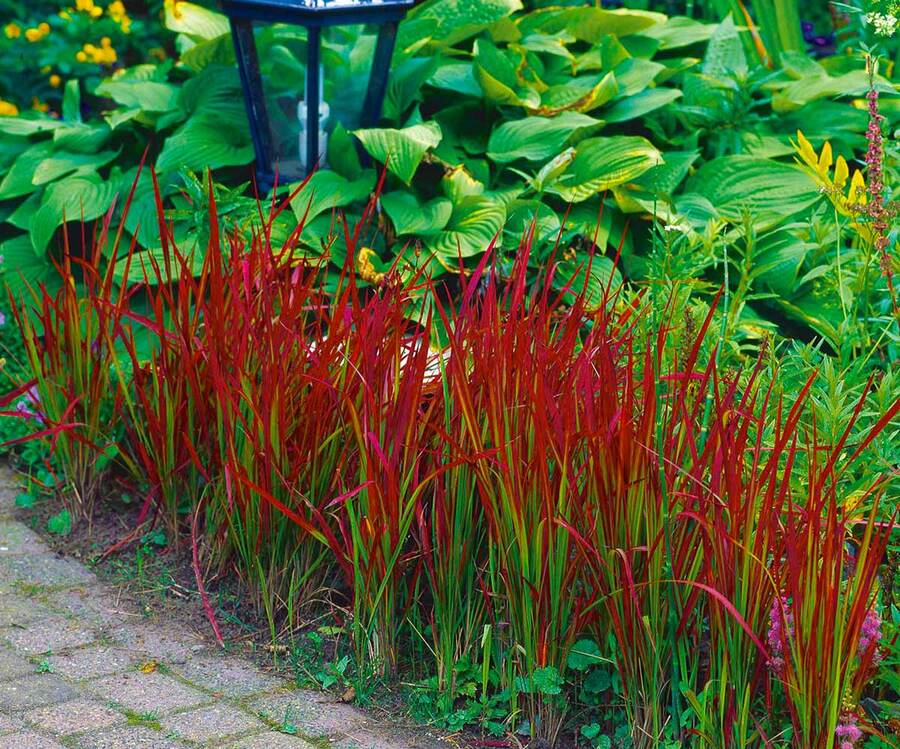
Shrubs and Trees
Trees and shrubs are perennial plants that can also be used in the decoration of sidewalks and pathways. In most cases, flowers are planted along the pathways, and shrubs and trees are planted a little further inward. Both should have a decorative appearance and a compact crown. The most popular option is topiary, which achieves decorative effect through the sculptural pruning of branches.
Tip! Neatly trimmed trees and shrubs give the site a well-groomed and stylish look.

Flowers that bloom all summer
Blooming throughout the warm months can please: pyrethrum, astilbe, and lilies. When planting them, it is necessary to plan their arrangement so that the flowers do not shade each other and do not interfere with blooming. With proper placement, an impression of continuous blooming will be created.

Eco-garden: what to plant and how to care for it
An eco-garden is a popular trend in landscaping a suburban plot. The paths in such a garden can be decorated with tree stumps or wood chips, while the edges of the pathways can be lined with branches.
In an eco-garden, the use of plants should have a simple and natural appearance. To achieve this, forest plants and garden flowers can be combined in a single composition.
Tip! When arranging plant groups, it is important to move away from strict geometric shapes to give the composition an informal and natural appearance.

A low-maintenance garden
A lazy garden can be a solution for gardeners who don’t want to spend a lot of time maintaining the shape and appearance of flower compositions. In this case, it is recommended to choose low-maintenance plants that have a decorative appearance throughout the season. The best option would be Japanese spirea, particularly dwarf varieties. Examples of how such flowers can look when decorating a garden can be seen in the photos.

Hedge
People view a hedge as a dense row of plants with stems that can either stand straight or lean. They select shrubs for this purpose, which can form a hedge as they grow.
In time, you can shape these shrubs into a fence-like form. A living hedge requires minimal care, mainly timely pruning to maintain its shape. Coniferous and other shrubs excel at the task of enclosing a territory.

Designing pathways in sunny and shaded areas
When selecting varieties to plant on a lawn, it is essential to consider whether the area is in direct sunlight or shaded.
Shaded pathways
Not all plants are suitable for shady areas. Most plants prefer some sunlight exposure to reach their leaves.

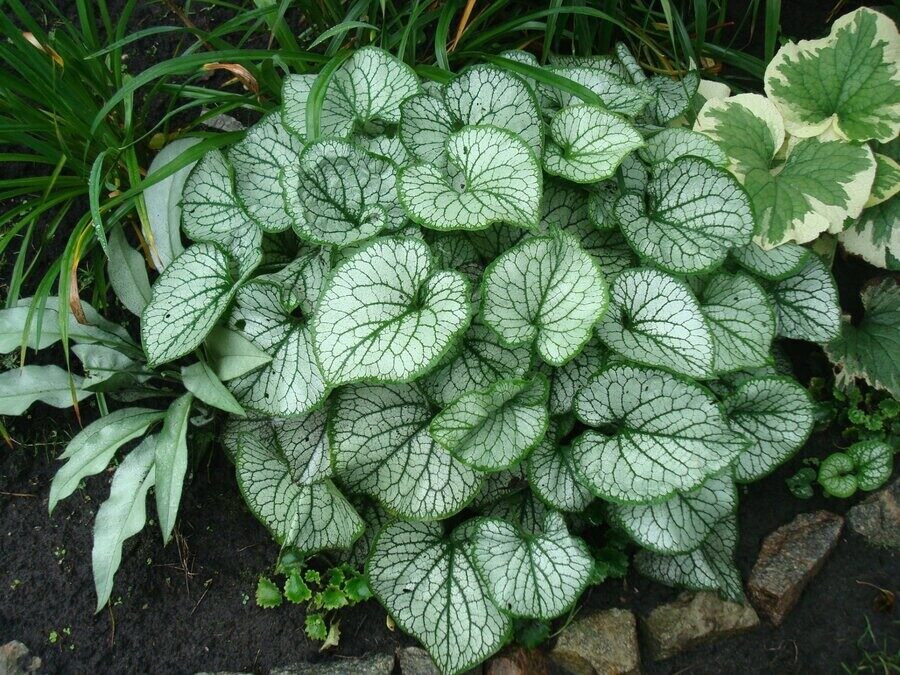
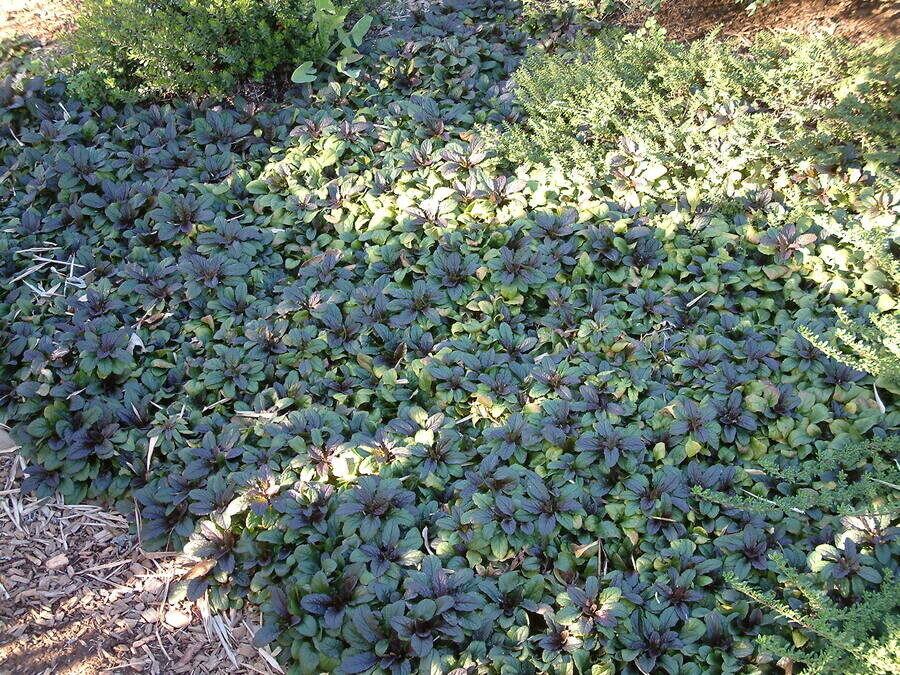
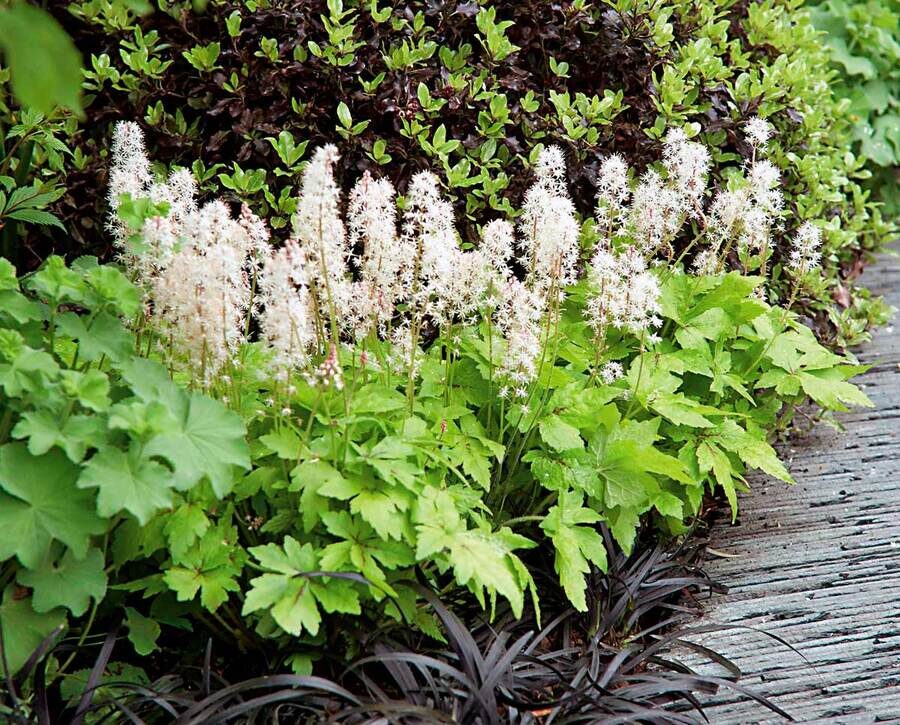
Path in the sun
There is a wide choice of plants for paths filled with sunlight. However, it is important to keep in mind that moisture from such areas evaporates quickly, and additional watering may be necessary on hot days.

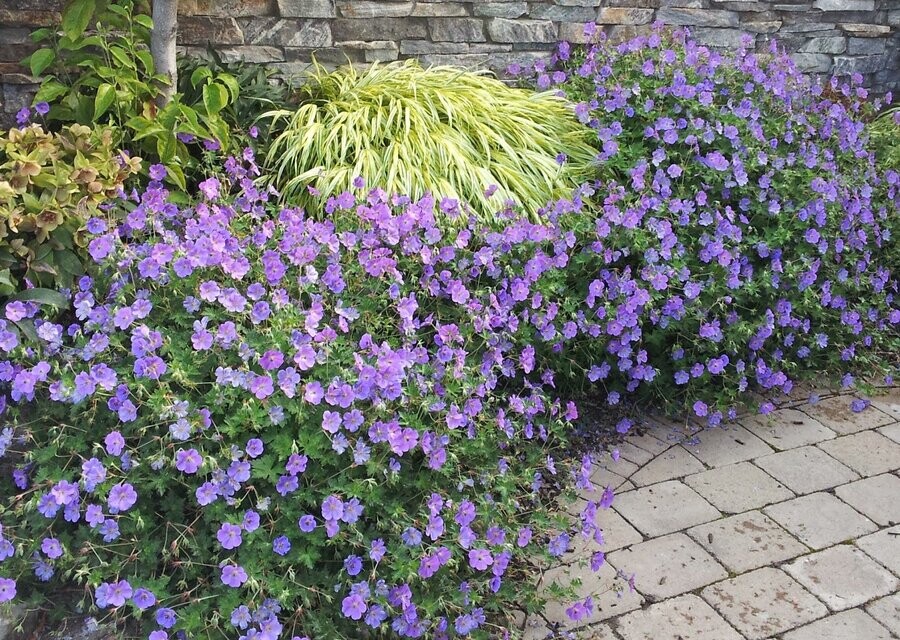


Planning Planting: What You Need to Know
When choosing flowers for a pathway, it is recommended to prefer those that require similar conditions and bloom around the same time. They should not interfere with neighboring plants or shade them from the sun. Contrasting flowers are better for a greater effect.
Plants that are unsuitable for the local climate, require a lot of care, are a mix of different types that require different care, prickly, or prefer shade in a sunny area or vice versa should not be planted near the pathways.
It is important to regularly water the flowerbeds along the pathways.
Planting schemes for a straight pathway of medium or large width
- The closest row should have low plants with bright flowers or dense foliage;
- The row behind them can consist of tall flowers or bushes that have been pruned, such as arborvitae;
- The next row can be formed by trees.
If the pathway is narrow, it is better to prefer a single type of border flowers. Decorative pathways made of tiles and having an irregular shape can be decorated with a mix of several types of plants.
Gravel pathways may only require a few low-maintenance plants.
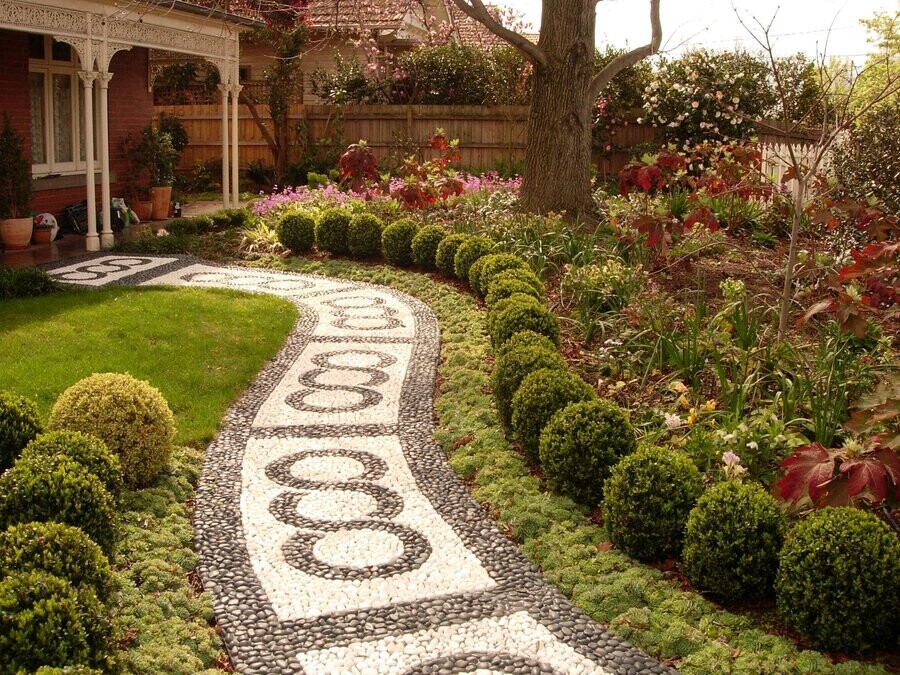


Flower bordering not only serves a decorative purpose, but also acts as a visual separator between the lawn and the path, giving a sense of completion to the overall landscaping design. When choosing the right plants for the borders, the landscape design will look harmonious and colorful.





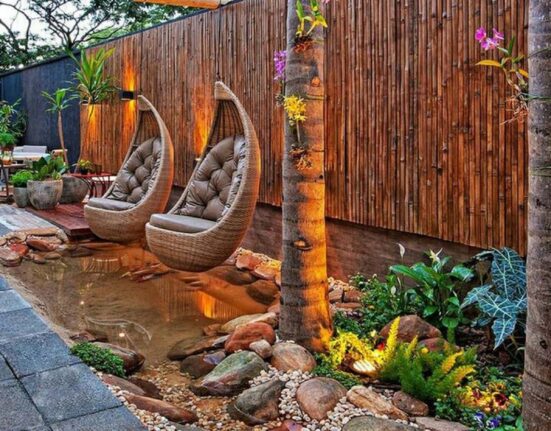
Leave feedback about this